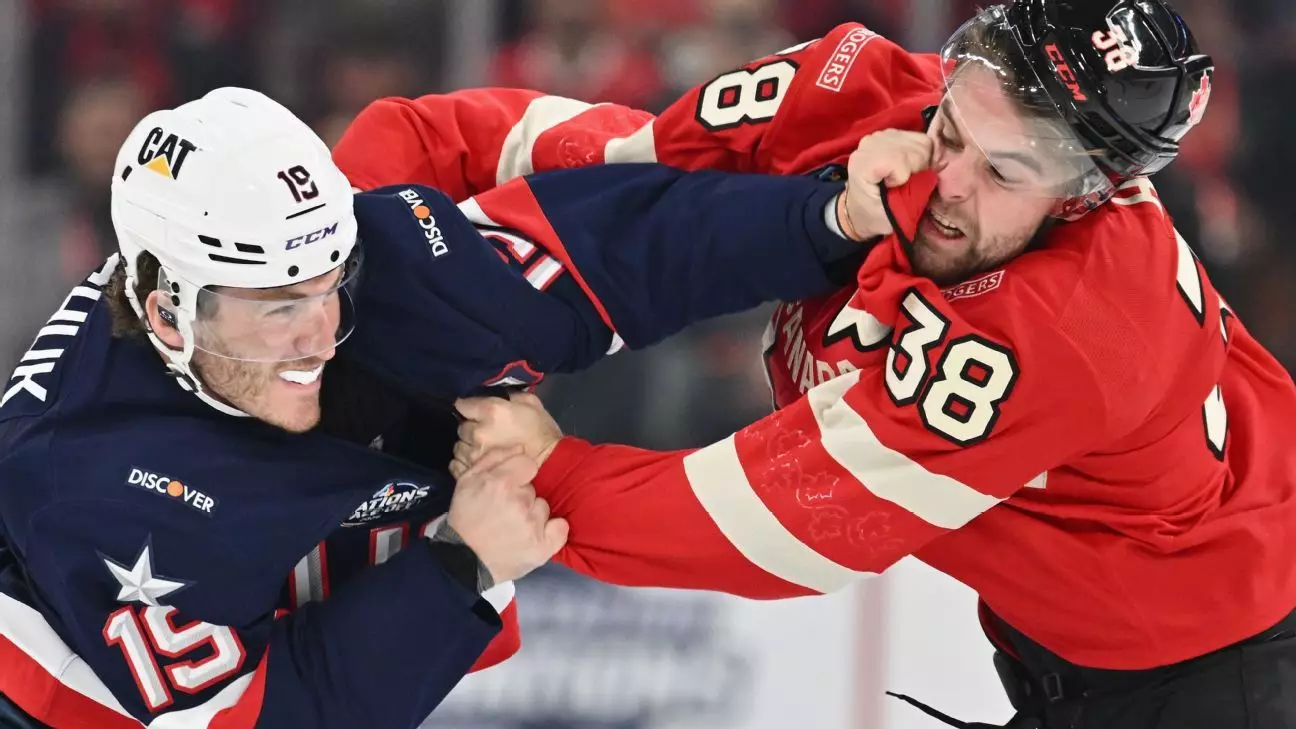The realm of hockey experienced an electrifying surge during the recent NHL 4 Nations Face-Off held in Boston, particularly during the much-anticipated match between the United States and Canada. With emotions running high and intensity palpable, the U.S. secured a riveting 3-1 victory, marking a monumental moment that transcends mere wins and losses. Coach Jon Cooper of Team Canada, while lamenting the outcome, acknowledged the significance of the event, stating that the hockey landscape is undoubtedly enriched by such encounters. The game attracted a staggering 5.4 million viewers in the U.S., captivating audiences as elite NHL players clashed in an exhibition of national pride, competition, and raw emotion.
It is essential to examine the ripple effects of this match, not just on the players and the immediate fans, but on the broader hockey culture in North America. The blend of sport and politics added layers to the narrative, especially as Montreal crowds jeered the U.S. national anthem in reaction to external political tensions. This backdrop created an immediate sense of urgency and intensity for both players and spectators alike.
The match’s opening moments were marked by unprecedented physicality, as multiple fights erupted almost instantaneously, with the first fight occurring just nine seconds into the game. This frenetic start, highlighted by players Matthew and Brady Tkachuk along with J.T. Miller engaging in brawls, dramatically shifted the atmosphere within the arena. Players and fans alike were not merely spectators but participants in a spectacle that turned the game into a visceral experience. Jesper Bratt from Sweden remarked on the extraordinary engagement of the crowd, highlighting how the fans’ deep emotional ties enhanced the game’s energy.
Canada’s Travis Konecny encapsulated this fiery environment by stating that “it’s a war out there.” This phrasing points not only to the literal battles on the ice but also to the symbolic struggle for supremacy between the historic rivals. Fighting remains a contentious topic in hockey, with fervent debates surrounding its presence in the sport. Yet, as Cooper noted, it served as a catalyst for what would unfold—high-stakes hockey where the intensity and drama captivated millions.
What unfolded during the match resonated beyond the confines of the rink, drawing interest even from those typically indifferent towards hockey. Players remarked on how the palpable intensity of the game distinguished it from the more casual atmosphere of traditional All-Star events. Center Vincent Trocheck’s comment regarding the intensity being akin to “playoff hockey” reinforces this distinction, elevating the match to a status akin to critical playoff games where national pride hangs in the balance.
The palpable excitement surrounding this high-stakes match is poised to inspire the nextwave of hockey players. Sullivan’s reflections on the potential long-term significance of such a performance echo the sentiment that moments like these could motivate young players much like historic events such as the “Miracle on Ice.” The community of players, fans, and aspiring hockey enthusiasts were treated to an exhibition of skill and passion that showcased the very essence of sporting rivalries.
As the tournament continues with Canada facing elimination against Finland, and the U.S. gearing up for a confrontation with Sweden, the implications of this match extend into the future of international hockey. The enormity of the U.S.-Canada rivalry has always served as an incubator for many aspects of hockey culture, from sportsmanship to fierce competition.
What made this event particularly significant was the manner in which it underscored the prominence of national identity interwoven with sport. Erik Haula from Finland captured this perfectly, stating it was “a great hockey game between great players,” emphasizing how powerful such narratives can be for the game as a whole.
This clash of nations served as a microcosm of hockey’s ability to draw individuals into an emotional web, intertwining personal and collective pride within a broader cultural context. In that sense, the game was not merely an athletic contest; it was a celebration of everything that makes ice hockey a beloved sport, igniting a passion that has the potential to inform the next generation of players and fans alike.
Through events like the NHL 4 Nations Face-Off, the ripples of excitement extend beyond the rink, encapsulating the love for the sport that defines communities and forges connections among nations.

